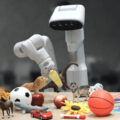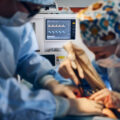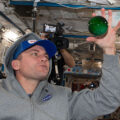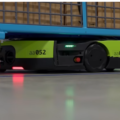In the rapidly evolving field of healthcare, technological advancements have revolutionized the way we approach cardiac care. Among these innovations, robotic-assisted surgery has emerged as a game-changer, offering enhanced precision, minimally invasive techniques, and improved patient outcomes. In this blog post, we will explore the journey of robotic innovations in cardiac care, from their inception in research laboratories to their application at the bedside.
The Genesis of Robotic Cardiac Surgery: Robotic innovations in cardiac care have their roots in pioneering research and development efforts. Early experiments laid the foundation for robotic-assisted surgical techniques, paving the way for the integration of robotics into cardiac procedures. From the conceptualization of robotic systems to the refinement of surgical techniques, researchers and engineers have worked tirelessly to push the boundaries of what is possible in cardiac surgery.
Translating Research into Practice: The transition from the laboratory to the clinic represents a critical phase in the journey of robotic innovations. Clinical trials and studies have demonstrated the safety, efficacy, and feasibility of robotic-assisted cardiac procedures. Surgeons have embraced these technologies, incorporating them into their practice to offer patients minimally invasive alternatives with reduced recovery times and improved outcomes.
Advancements in Surgical Techniques: Robotic-assisted surgery has introduced novel approaches to common cardiac procedures, such as coronary artery bypass grafting (CABG), valve repair or replacement, and atrial fibrillation treatment. Surgeons can now perform intricate maneuvers with unparalleled precision and control, leading to better long-term results and reduced risks for patients. Moreover, robotic systems enable surgeons to access hard-to-reach areas of the heart with greater ease, expanding the scope of what is achievable in cardiac surgery.
Patient-Centered Care: At the heart of every innovation in cardiac care is the patient. Robotic technologies prioritize patient safety, comfort, and recovery, offering less invasive alternatives to traditional open-heart surgery. Patients benefit from smaller incisions, reduced pain, shorter hospital stays, and faster return to normal activities. Furthermore, robotic-assisted procedures often result in improved cosmetic outcomes, enhancing the overall patient experience and satisfaction.
Looking Ahead: As technology continues to evolve, so too will the landscape of robotic innovations in cardiac care. Future developments may focus on enhancing automation, integrating artificial intelligence and machine learning algorithms, and expanding the repertoire of procedures amenable to robotic-assisted techniques. Additionally, efforts to improve accessibility, affordability, and training in robotic surgery will further democratize access to advanced cardiac care around the world.
The journey of robotic innovations in cardiac care exemplifies the transformative power of technology in healthcare. From humble beginnings in research laboratories to widespread adoption in clinical practice, robotic-assisted surgery has redefined the standards of excellence in cardiac care. As we look to the future, the continued collaboration between researchers, clinicians, engineers, and patients will drive further advancements, ensuring that robotic technologies remain at the forefront of cardiac innovation for years to come.








